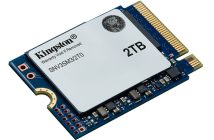
While video surveillance systems are touted as integral to build smart and sustainable cities, the cameras themselves must also be designed for sustainability.
Individually, modern security cameras do not consume a significant amount of energy.
However, extensive surveillance systems can incorporate dozens of cameras and servers, creating a more substantial energy burden that impacts progress towards a sustainable future.
“The recent 8th Annual Global Conference on Energy Efficiency saw 45 countries endorse the Versailles Statement on this being ‘the crucial decade for energy efficiency’. We are incorporating energy-efficient features into our solutions to support global sustainability and energy security targets without compromising on safety,” said Andy Ryu, headquarter at Hanwha Vision.
In line with this commitment, Hanwha Vision, a global vision solution provider, recently unveiled the SolidEDGE camera – the first real Solid State Drive (SSD)-based camera with an embedded server – that was designed around energy-saving principles for reduced environmental impact.
Energy Conservation through Serverless Video Solution
One of the features of the SolidEDGE camera is its serverless setup, which significantly reduces energy consumption and total cost of ownership.
It eliminates the traditional need for separate servers in temperature-controlled data centers, which consume considerable amounts of electricity.
Hanwha Vision has integrated solid storage directly into the body of the SolidEDGE camera and pre-installed the Wisenet WAVE video management system, which can run on the edge.
Additionally, the SolidEDGE camera can also connect to and record video from up to five additional guest cameras.
Energy-efficient Data Analytics with Edge AI
The exponential growth in surveillance technology has led to an unprecedented amount of data being generated daily – more than 2,500 petabytes of data as of 2019.
Storing and analyzing this data consumes significant energy as servers in data centers require substantial power. However, Hanwha Vision has tackled this challenge by incorporating edge artificial intelligence (Edge AI) into the camera.
By leveraging Edge AI, Hanwha Vision’s cameras can quickly control and transmit important metadata, reducing the operating load on the server and minimizing overall power consumption.
This also eliminates common energy burdens caused by network overloads or storage overcapacity.
Additionally, Hanwha Vision’s AI network video recorders (NVR) further enhance the efficiency of data analysis, enabling quick identification and retrieval of relevant information.
Increased Energy Savings with AI-based Low-light Image Processing Technology
Traditionally, surveillance cameras require well-lit environments to produce high-quality recordings.
This often leads to businesses leaving lights on in stores and outside storefronts, contributing to unnecessary energy consumption.
In fact, major European retailer SPAR Austria estimated an annual energy consumption reduction of one million kilowatt hours simply by reducing storefront advertising and outside lighting hours across more than 1,500 stores.
However, Hanwha Vision’s edge devices use Hanwha Vision’s AI-based, low-light image processing technology. This enables clear recordings in dim conditions and eliminates the need to maintain a well-lit environment solely for surveillance.





